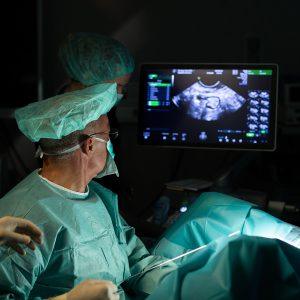Abstract
Reduction of the number of primordial follicles, associated with cellular and molecular damage of the
ovarian tissue, leads to failure of ovarian function and, ultimately, to menopause. It has been proven that the ovarian fragmentation leads to the interruption of Hippo signaling pathway, thereby leading to promotion of follicular
growth. It has been shown that AKT (protein kinase B) stimulator [PTEN (phosphatase with tensin homology deleted
in chromosome 10) inhibitor and phosphatidyinositol-3-kinase (PI3 kinase) stimulator] can activate dormant primordial follicles. Exposure of ovarian tissue to autologous concentrated growth factors results in interrupting Hippo
signaling and stimulating AKT pathway, restoring and improving reproductive function of the ovary. Here we show
that it is possible to improve reproductive function by modifying ovarian cell genetic control using autologous growth
factors. A 39-year-old patient with amenorrhea and FSH 42.3 mIU/ml was diagnosed with premature ovarian insufficiency (POI). Monthly bleeding was HRT induced and she was treated for insulin resistance and hyperthyroidism.
Laparoscopic biopsy of the cortical tissue of the ovary was done during cystectomy, with vitrification in April 2014
when the patient was 42 years old. For vitrification, the Kitazato protocol was used. Fragmentation of ovarian tissue
was done after thawing (blockage of HIPPO signaling) in August 2015. Blood was taken for PLRP (platelet-leukocyte
rich plasma) procedure. Next, autologous PLRP incubation of the obtained ovarian tissue was done (activation of
AKT signaling). After 48 hrs, the processed tissue was installed subcortically in both ovaries, under the color Doppler
ultrasound control. Three months after the orthotopic retransplantation of activated ovarian tissue, in November
2015, there was growth of a follicle in the spontaneous cycle, and the mature MII cell was obtained under ultrasonic
aspiration. After intracytoplasmatic sperm injection (ICSI), fertilization and cleavage occurred, and the embryo was
vitrified on day two, on patient’s request. The authors discuss the possibilities of genetic treatment of the ovarian
tissue in order to restore both reproductive and endocrine functions of the ovary. To our knowledge, this is the first
case of human embryo obtained after autologous PLRP in vitro activation of ovaries by interrupting Hippo signaling
and PLRP stimulating AKT pathway with ultrasound-guided orthotropic re-transplantation.
Read more at https://e-century.us/files/ajceog/4/5/ajceog0061663.pdf






